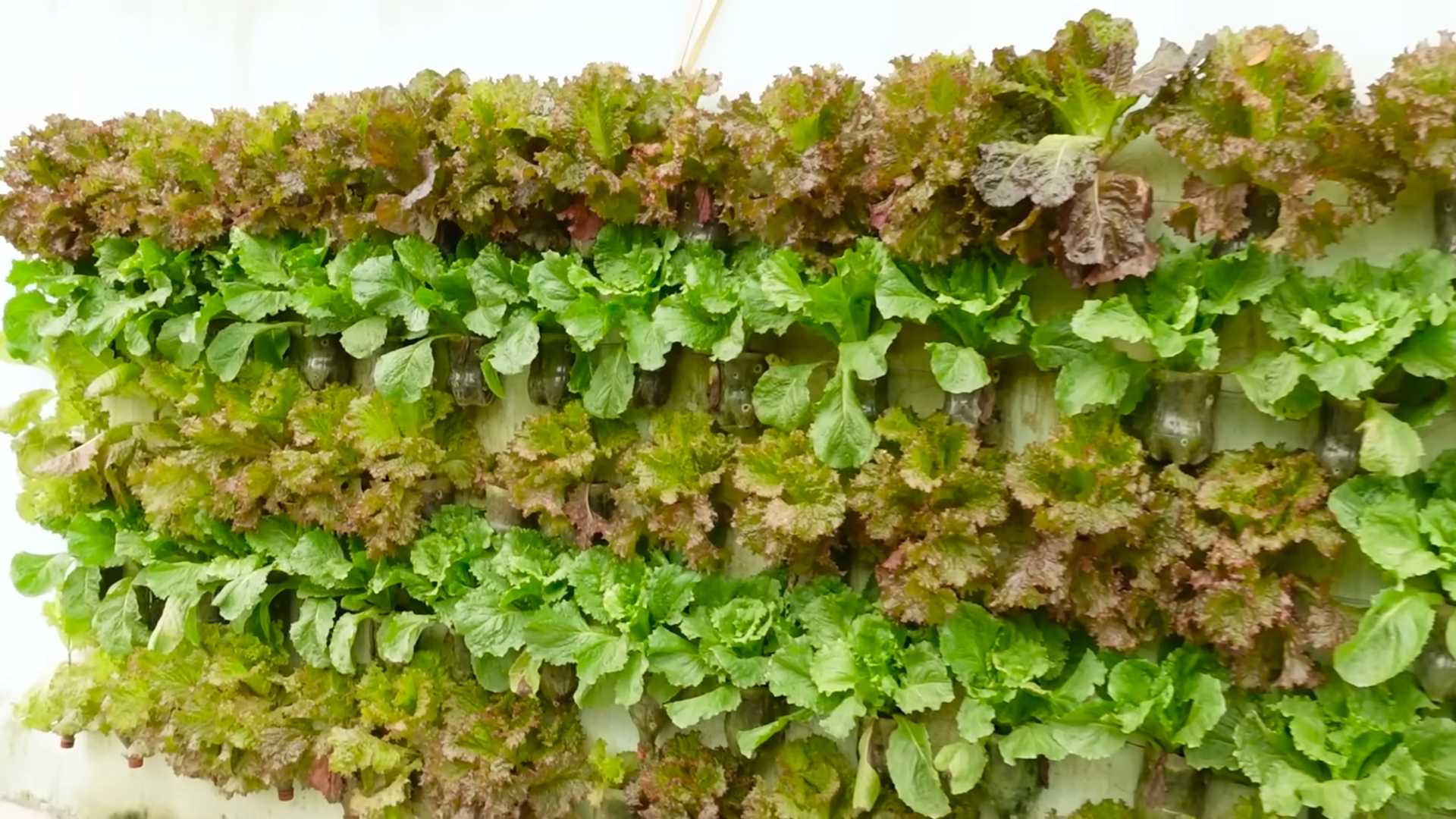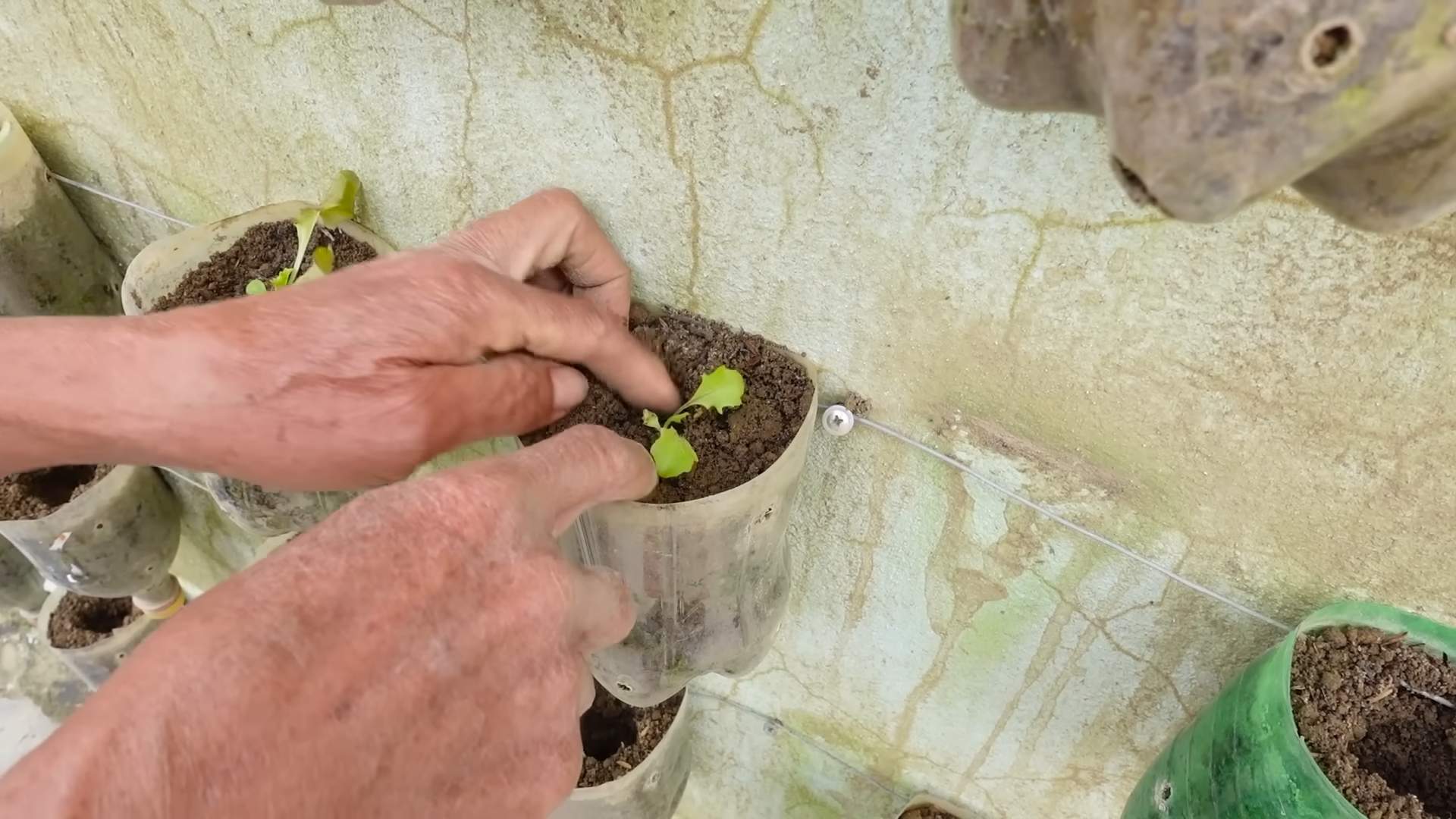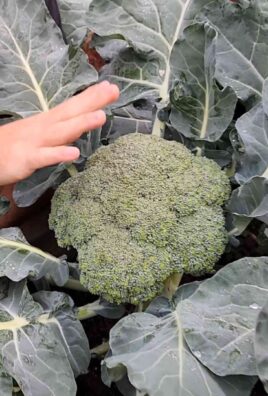Planting Lettuce at Home can seem daunting, especially if you’re new to gardening. But trust me, there’s nothing quite like the taste of fresh, homegrown lettuce in your salad! Imagine stepping outside your back door and harvesting crisp, vibrant leaves for dinner – it’s a simple pleasure that’s within everyone’s reach.
Lettuce has a rich history, dating back to ancient Egypt where it was initially cultivated for its seeds and oil. Over time, the leafy greens became a staple in diets across the globe. Today, growing your own lettuce is not just about fresh produce; it’s about connecting with nature, reducing your carbon footprint, and knowing exactly where your food comes from.
Why should you learn these DIY tricks for planting lettuce? Well, store-bought lettuce can be expensive and often lacks the flavor and nutrients of homegrown varieties. Plus, let’s be honest, who wants to deal with wilted, pre-packaged greens? With a few simple hacks, you can enjoy a continuous supply of delicious lettuce right from your own backyard (or even your balcony!). I’m going to share some easy-to-follow tips and tricks that will have you harvesting bowls of fresh lettuce in no time. Get ready to discover the joy of planting lettuce at home and elevate your meals with homegrown goodness!

Planting Lettuce at Home: A Beginner’s Guide
Hey there, fellow gardening enthusiasts! I’m so excited to share my tried-and-true method for growing delicious, crisp lettuce right in your own backyard (or even on your balcony!). Forget those sad, wilted heads at the grocery store – with a little effort, you can have a constant supply of fresh, organic lettuce whenever you want it. Let’s get started!
Choosing Your Lettuce Varieties
Before we even think about soil, let’s talk lettuce! There are so many different types to choose from, and the best part is, you can mix and match to create your own custom salad blend. Here are a few of my favorites:
* Romaine: The classic choice for Caesar salads! It’s sturdy, upright, and has a slightly bitter flavor.
* Butterhead (Boston or Bibb): These are known for their soft, delicate leaves and mild, buttery flavor. They’re perfect for simple salads.
* Loose-leaf (Red Sails, Black Seeded Simpson): These are super easy to grow and you can harvest them leaf by leaf, meaning you’ll have lettuce for weeks! They come in a variety of colors and textures.
* Crisphead (Iceberg): Okay, I know Iceberg gets a bad rap, but sometimes you just crave that satisfying crunch! It’s a bit more challenging to grow than other varieties, but definitely doable.
Tip: Consider your climate when choosing your lettuce. Some varieties are more heat-tolerant than others. Check the seed packet for specific recommendations.
Gathering Your Supplies
Okay, now that we’ve picked our lettuce, let’s gather our supplies. You’ll need:
* Lettuce seeds: Choose your favorite varieties!
* Seed starting trays or small pots: These are optional, but I highly recommend them for starting your seeds indoors.
* Potting mix: Use a good quality seed starting mix or potting mix. Don’t use garden soil, as it can be too heavy and compact.
* Garden soil or raised bed mix: If you’re planting directly in the ground or in a raised bed.
* Watering can or hose with a gentle spray nozzle: You don’t want to blast your delicate seedlings!
* Fertilizer (optional): A balanced organic fertilizer can help your lettuce thrive.
* Gardening gloves: To keep your hands clean!
* Trowel or small shovel: For transplanting seedlings.
* Row covers or netting (optional): To protect your lettuce from pests like slugs and aphids.
Starting Your Seeds (Optional but Recommended)
Starting your seeds indoors gives them a head start and protects them from harsh weather and pests. Here’s how I do it:
1. Fill your seed starting trays or pots with potting mix. Gently press the soil down to remove any air pockets.
2. Sow the seeds. Sprinkle a few seeds on top of the soil in each cell or pot. Lettuce seeds are tiny, so don’t overdo it.
3. Cover the seeds lightly with more potting mix. Just a thin layer is enough.
4. Water gently. Use a spray bottle or watering can with a gentle spray nozzle to moisten the soil.
5. Cover the trays or pots with a clear plastic lid or plastic wrap. This will help to create a humid environment that will encourage germination.
6. Place the trays or pots in a warm, bright location. A sunny windowsill or under grow lights is ideal.
7. Keep the soil moist but not soggy. Check the soil daily and water as needed.
8. Remove the plastic lid or wrap once the seeds have germinated. This usually takes about 7-14 days.
9. Thin the seedlings. Once the seedlings have their first true leaves (the second set of leaves), thin them out so that only one strong seedling remains in each cell or pot.
10. Harden off the seedlings. Before transplanting your seedlings outdoors, you’ll need to “harden them off.” This means gradually exposing them to outdoor conditions over a period of about a week. Start by placing them outside for an hour or two each day, gradually increasing the amount of time they spend outdoors.
Preparing Your Planting Area
Whether you’re planting in the ground, in a raised bed, or in containers, it’s important to prepare your planting area properly.
1. Choose a sunny location. Lettuce needs at least 6 hours of sunlight per day.
2. Prepare the soil. If you’re planting in the ground, remove any weeds, rocks, and debris. Amend the soil with compost or other organic matter to improve drainage and fertility. If you’re planting in a raised bed or container, fill it with a good quality raised bed mix or potting mix.
3. Level the soil. Use a rake or trowel to level the soil surface.
Transplanting Your Seedlings (or Direct Sowing)
Now for the fun part – planting! You have two options: transplanting your seedlings or direct sowing the seeds.
Transplanting Seedlings:
1. Dig a hole. Dig a hole that is slightly larger than the root ball of your seedling.
2. Gently remove the seedling from its tray or pot. Be careful not to damage the roots.
3. Place the seedling in the hole. Make sure the top of the root ball is level with the soil surface.
4. Fill in the hole with soil. Gently press the soil around the seedling to secure it in place.
5. Water thoroughly. Water the seedling well to help it settle in.
6. Space your plants properly. Space your lettuce plants about 6-12 inches apart, depending on the variety. Check the seed packet for specific recommendations.
Direct Sowing:
1. Create shallow furrows. Use a trowel or your finger to create shallow furrows in the soil, about 1/4 inch deep.
2. Sow the seeds. Sprinkle the seeds evenly along the furrows.
3. Cover the seeds lightly with soil. Gently pat the soil down.
4. Water gently. Use a spray bottle or watering can with a gentle spray nozzle to moisten the soil.
5. Thin the seedlings. Once the seedlings have their first true leaves, thin them out so that they are spaced about 6-12 inches apart.
Caring for Your Lettuce
Once your lettuce is planted, it’s important to provide it with the care it needs to thrive.
1. Water regularly. Lettuce needs consistent moisture to grow well. Water deeply whenever the soil feels dry to the touch. Aim for about an inch of water per week.
2. Fertilize (optional). If you want to give your lettuce a boost, you can fertilize it with a balanced organic fertilizer every few weeks. Follow the instructions on the fertilizer package.
3. Weed regularly. Weeds can compete with your lettuce for nutrients and water, so it’s important to remove them regularly.
4. Protect from pests. Slugs and aphids are common lettuce pests. You can protect your lettuce from these pests by using row covers or netting. You can also handpick slugs off your plants or use organic pest control methods like diatomaceous earth.
5. Watch out for bolting. Bolting is when lettuce plants send up a flower stalk and the leaves become bitter. This usually happens when the weather gets hot. To prevent bolting, try to plant your lettuce in a shady location or use shade cloth to protect it from the sun. You can also choose heat-tolerant varieties.
Harvesting Your Lettuce
The best part of growing your own lettuce is, of course, harvesting it!
1. Harvest when the leaves are the desired size. You can start harvesting lettuce leaves when they are about 4-6 inches long.
2. Harvest in the morning. The leaves will be crisper and more flavorful if you harvest them in the morning.
3. Harvest by cutting or picking the outer leaves. For loose-leaf varieties, you can harvest individual leaves as needed. For head lettuce varieties, you can cut the entire head at the base.
4. Wash and dry the leaves. Wash the lettuce leaves thoroughly to remove any dirt or debris. Dry them with a salad spinner or pat them dry with a paper towel.
5. Store the lettuce in the refrigerator. Store the lettuce in a plastic bag or container in the refrigerator. It will keep for several days.
Troubleshooting
Even with the best care, you might encounter some problems when growing lettuce. Here are a few common issues and how to fix them:
* Yellowing leaves: This could be a sign of overwatering, underwatering, or nutrient deficiency. Check the soil moisture and adjust your watering accordingly.

Conclusion
So, there you have it! Planting lettuce at home isn’t just a way to save money; it’s a gateway to fresher, tastier salads and a deeper connection with your food. Forget those limp, pre-packaged greens from the grocery store. Imagine crisp, vibrant lettuce leaves, bursting with flavor, harvested just moments before they grace your plate. That’s the power of growing your own.
This DIY trick is a must-try for several compelling reasons. First, you have complete control over the growing process. You can choose organic seeds, avoid harmful pesticides, and tailor the soil and watering to your lettuce’s specific needs. This results in healthier, more nutritious greens for you and your family. Second, it’s incredibly rewarding. There’s something deeply satisfying about nurturing a plant from seed to harvest. It’s a tangible accomplishment that connects you to the natural world. Third, it’s surprisingly easy! As we’ve outlined, even beginners can successfully grow lettuce at home with just a few simple steps.
But don’t stop there! Experiment with different varieties of lettuce to discover your favorites. Try growing loose-leaf varieties like romaine or butter lettuce for continuous harvesting, or opt for head lettuce like iceberg or crisphead for a satisfying crunch. You can also add companion plants like marigolds or basil to deter pests and enhance the flavor of your lettuce. Consider succession planting – sowing new seeds every few weeks – to ensure a continuous supply of fresh greens throughout the growing season. For a fun twist, try growing your lettuce in containers on a balcony or patio if you’re short on space. You can even create a vertical lettuce garden using repurposed materials like pallets or plastic bottles.
The possibilities are endless!
We wholeheartedly encourage you to give this DIY trick a try. It’s a simple, affordable, and incredibly rewarding way to enjoy fresh, healthy lettuce all season long. Don’t be intimidated if you’ve never gardened before. Lettuce is a relatively easy crop to grow, and with a little patience and care, you’ll be enjoying homegrown salads in no time.
Once you’ve harvested your first batch of homegrown lettuce, we’d love to hear about your experience! Share your tips, tricks, and photos in the comments below. Let us know what varieties you grew, what challenges you faced, and what you learned along the way. Your feedback will not only help other readers but also inspire us to continue sharing valuable gardening tips and tricks. Let’s build a community of home gardeners, one delicious lettuce leaf at a time! So, grab your seeds, get your hands dirty, and experience the joy of planting lettuce at home. You won’t regret it!
FAQ
What is the best time of year to plant lettuce?
Lettuce is a cool-season crop, meaning it thrives in cooler temperatures. The best time to plant lettuce depends on your climate. In general, you can plant lettuce in early spring or late summer/early fall. For a spring crop, start seeds indoors 4-6 weeks before the last expected frost. Transplant seedlings outdoors once the soil has warmed up slightly. For a fall crop, sow seeds directly into the garden in late summer or early fall, about 6-8 weeks before the first expected frost. In warmer climates, you can grow lettuce throughout the winter.
What kind of soil is best for growing lettuce?
Lettuce prefers well-drained, fertile soil that is rich in organic matter. The ideal soil pH is between 6.0 and 7.0. Before planting, amend the soil with compost or well-rotted manure to improve drainage and fertility. If your soil is heavy clay, consider adding sand or perlite to improve drainage. You can also use raised beds or containers filled with a high-quality potting mix.
How much sunlight does lettuce need?
Lettuce needs at least 6 hours of sunlight per day to thrive. However, in hot climates, lettuce can benefit from some afternoon shade to prevent bolting (going to seed). If you’re growing lettuce indoors, use grow lights to provide adequate light.
How often should I water lettuce?
Lettuce needs consistent moisture to grow well. Water regularly, especially during hot, dry weather. Aim to keep the soil consistently moist but not waterlogged. Water deeply and less frequently, rather than shallowly and more often. Avoid overhead watering, as this can promote fungal diseases. Use a soaker hose or drip irrigation to water the soil directly.
How do I prevent lettuce from bolting?
Bolting is when lettuce plants prematurely send up a flower stalk and become bitter. This is often caused by hot weather or stress. To prevent bolting, choose bolt-resistant varieties of lettuce. Plant lettuce in a location that receives some afternoon shade. Water regularly to keep the soil cool and moist. Harvest lettuce frequently to encourage continued leaf production.
What are some common pests and diseases that affect lettuce?
Common pests that affect lettuce include aphids, slugs, snails, and cutworms. To control pests, use organic pest control methods such as hand-picking, insecticidal soap, or diatomaceous earth. Common diseases that affect lettuce include downy mildew, powdery mildew, and leaf spot. To prevent diseases, choose disease-resistant varieties of lettuce. Provide good air circulation around plants. Avoid overhead watering. Remove and destroy any infected leaves.
How do I harvest lettuce?
The harvesting method depends on the type of lettuce you are growing. For loose-leaf varieties, you can harvest individual leaves as needed, starting with the outer leaves. For head lettuce, wait until the head is firm and well-formed before harvesting. Cut the head off at the base of the plant with a sharp knife.
Can I grow lettuce in containers?
Yes, lettuce grows well in containers. Choose a container that is at least 6 inches deep and has drainage holes. Fill the container with a high-quality potting mix. Plant lettuce seeds or seedlings according to the instructions on the seed packet or plant label. Water regularly and fertilize as needed.
What are some good companion plants for lettuce?
Good companion plants for lettuce include marigolds, basil, carrots, radishes, and onions. Marigolds deter pests such as nematodes and aphids. Basil repels whiteflies and other insects. Carrots and radishes help to loosen the soil and improve drainage. Onions deter slugs and snails.
How do I store harvested lettuce?
To store harvested lettuce, wash the leaves thoroughly and dry them with a salad spinner or paper towels. Store the lettuce in a plastic bag or container in the refrigerator. Lettuce will stay fresh for several days. You can also wrap the lettuce in a damp paper towel before storing it in a plastic bag.
Can I grow lettuce from seed indoors?
Yes, you can start lettuce seeds indoors 4-6 weeks before the last expected frost. Sow the seeds in a seed-starting tray or small pots filled with seed-starting mix. Keep the soil moist and warm. Once the seedlings have developed a few true leaves, transplant them into larger pots or into the garden.
What are some different varieties of lettuce I can grow?
There are many different varieties of lettuce to choose from, including romaine, butter lettuce, crisphead (iceberg), and loose-leaf varieties. Romaine lettuce is a tall, upright lettuce with crisp, dark green leaves. Butter lettuce has soft, buttery leaves and a mild flavor. Crisphead lettuce is a round, tightly packed head of lettuce with crisp, watery leaves. Loose-leaf varieties have loose, open leaves and come in a variety of colors and textures. Experiment with different varieties to find your favorites.





Leave a Comment